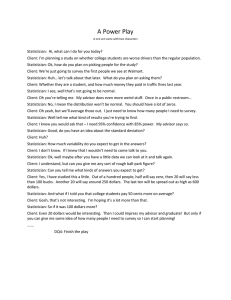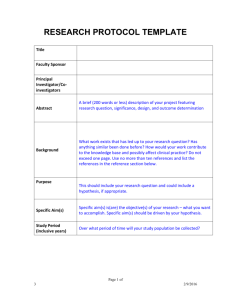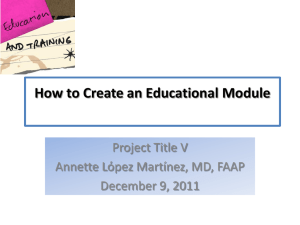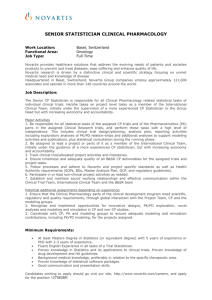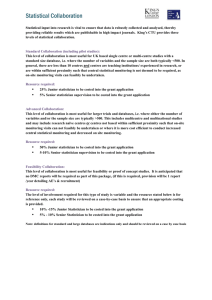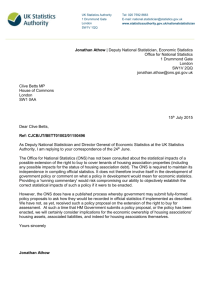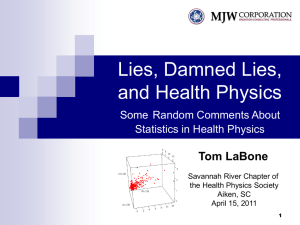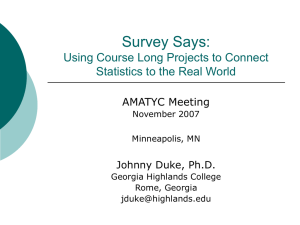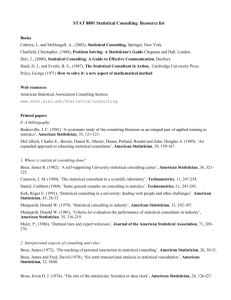Artificial Intelligence
advertisement
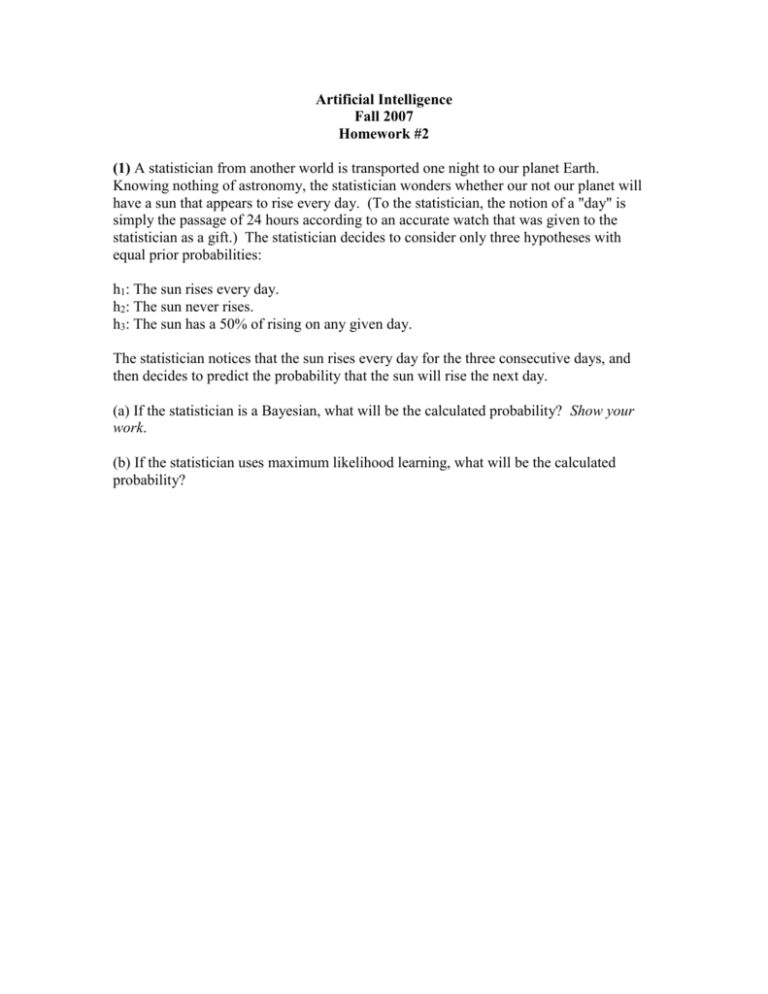
Artificial Intelligence Fall 2007 Homework #2 (1) A statistician from another world is transported one night to our planet Earth. Knowing nothing of astronomy, the statistician wonders whether our not our planet will have a sun that appears to rise every day. (To the statistician, the notion of a "day" is simply the passage of 24 hours according to an accurate watch that was given to the statistician as a gift.) The statistician decides to consider only three hypotheses with equal prior probabilities: h1: The sun rises every day. h2: The sun never rises. h3: The sun has a 50% of rising on any given day. The statistician notices that the sun rises every day for the three consecutive days, and then decides to predict the probability that the sun will rise the next day. (a) If the statistician is a Bayesian, what will be the calculated probability? Show your work. (b) If the statistician uses maximum likelihood learning, what will be the calculated probability? (2) Consider the information given in R&N Problem 13.8 (but you will not be answering exactly the same questions). (a) What is the prior probability that a person in your age group tests positive for the disease? (b) Use Bayes' rule to determine the probability that you actually have the disease, given that you tested positive for it. (c) Consider whether or not it would be useful to repeat the test for the disease multiple times. Express a reasonable assumption under which it would be useful. Express another reasonable assumption under which it would not be useful. (3) Consider the decision tree represented in Figure 18.2 from the book: This decision tree has been discussed in class (it is supposedly the actual decision tree typically used by Stuart Russell to decide whether or not to wait at a restaurant). Consider an agent attempting to learn this decision tree from examples. Assume that exactly 13 examples of been observed, including exactly one example corresponding to each leaf of the decision tree. Would the decision tree learning algorithm learn the correct tree? Explain your answer. (4) For the set of examples in Figure 18.3 in the book, we have seen the information gain for the attributes Type and Patrons if they are used at the root of a decision tree for the restaurant problem. (a) Compute the information gain for the attribute Price. (b) Assume that Patrons is chosen for the attribute at the root of the tree. Compute the information gain for the attribute Hungry when we recursively apply the decision tree algorithm to the child of the root corresponding to the value of Full for Patrons. (c) Would it make sense to compute the information gain of any attribute for the other children of the root (corresponding to the other values of Patrons)? Why or why not? (5) The first time I taught AI (but not since then), I gave a final exam. This question really only made sense on that day (the information, at the time, was true). However, I like the question, so I often reuse it; you will have to pretend that the information is current. Now that this has been explained, consider the following Bayesian network: The following describes the random variables represented in the Bayesian network: FinalFriends (FF) is true if and only if the final episode of Friends is on. Take this as a given, and assume it has probability 1. TribecaFilmFestival (TFF) is true if and only if I have a ticket for a movie at the Tribeca Film Festival. I do, so consider this probability to be 1 also. DVRFunctioning (DVR) is true if and only if my DVR (Time Warner's TiVo equivalent) is functioning; this has been pretty stable, so assume that the probability is 95%. Tired (T) is true if and only if I am tired tonight. The way things are going, assume that the probability that this is true is 75%. WatchSurvivor (WS) is true if and only if I watch Survivor when it is on (8:00 PM). This is less likely if the final episode of Friends is on at the same time (possibly involving a choice), and it is much less likely if I have a ticket for the Tribeca Film Festival (I would have to skip it); it is least likely if both of these things is true. Here is the conditional probability table (CPT) for the WatchSurvivor node: FF TFF P(WS) F F 0.9 F T 0.3 T F 0.5 T T 0.1 WatchTVLate (WTL) is true if and only if I stay up late watching TV. It is less likely if I have already watched Survivor when it was on, more likely if my DVR is functioning (since it would have what I want to watch), and less likely if I am tired. Here is the CPT for the WatchTVLate node: WS DVR T P(WTL) F F F 0.4 F F T 0.2 F T F 0.99 F T T 0.8 T F F 0.3 T F T 0.1 T T F 0.5 T T T 0.2 What is the overall probability that I stay up late watching TV tonight? Show your work.
